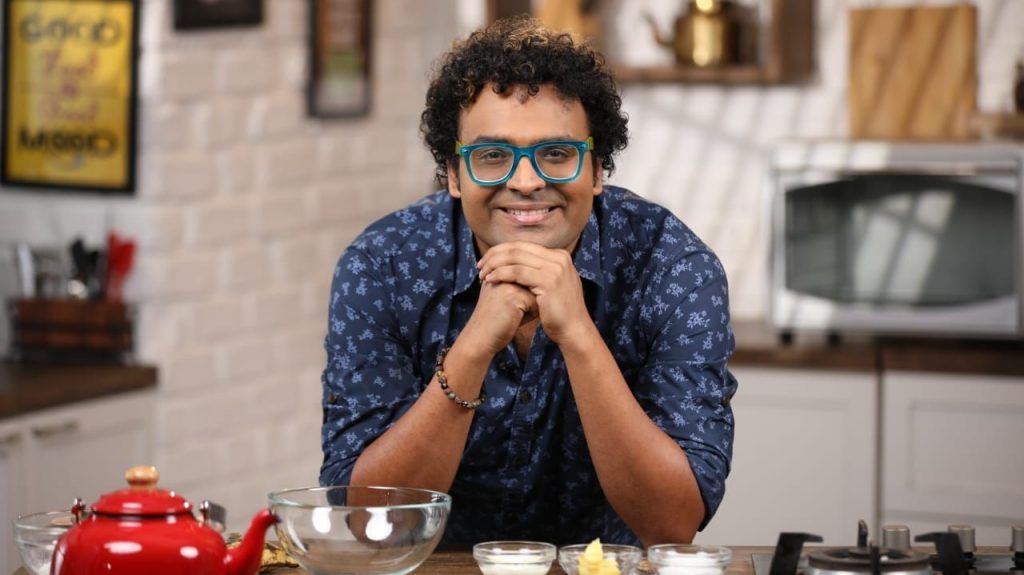
Varun Inamdar, Mumbai’s very own chocolate prince and celebrity chef, deepens his love for all things food by helming Singapore’s newest Indian restaurant, 27 Degrees W est (27°W) — his first venture outside of India!
With 22 years of contributions to Indian cuisine, Chef Varun Inamdar is widely recognised as one of India’s top celebrity chefs. His culinary expertise lies in blending traditional flavors with modern techniques, adding contemporary twists to classic recipes and bringing out the essence of Indian spices in a way that appeals to both purists and experimental food lovers.
From penning five cookbooks to shattering Guinness World Records with the world’s largest mud pie and winning two National Awards, Varun’s artistry has graced the palates of prime ministers, global leaders, royalty and film stars, including Barack Obama, Queen Rania of Jordan, Donald Trump, Narendra Modi and Kuwait’s Al Sabah royal family.
A Tapestry of Colours and Taste
At 27°W, Indian subcontinental influences converge at a captivating cocktail bar, where craft cocktails complement the serene outdoor lounge (40 seats). Inside, the main dining area (70 seats) offers traditional Indian flavours reimagined in modern small pl ates, perfect for intimate sharing.
Chaats, Spice & Everything Nice
On the menu, look forward to an eclectic array of borderless Indian fare, featuring flavors that are both heartwarming and innovative.
Begin with appetisers like crispy Kale Gol Gappa Puri Chaat ($15), an addictive plate of battered and fried kale served with gol gappa puri and house sauces and Chicken 65 ($15), a classic South Indian chicken dish seasoned with green chillies.
Raw appetisers offer an unconventional taste of India with items like Beef Tartare ($20), featuring hand-cut oyster blade beef folded with masala miso, wispy mustard and confit egg, and Malabar Scallop ($24), Hokkaido scallop sweetened with miso coconut, buckwheat and shallot crisps.

Don’t miss Varun’s specials: Togarashi Tossed Bhindi Jaipuri ($15), a rendition of Jaipur’s popular chaats featuring crisp fried okra sprinkled with shichimi togarashi, and a 72-hour fermented beetroot chutney ketchup. Also look forward to a reimagined Lobster Thermidor inspired by Singaporeans’ deep-rooted love for crab delicacies.
The Crabmeat Thecha Thermidor ($35) is made with crabs from India’s coastline and Thecha, a popular chili garlic condiment from India.
Grilled goodness sizzles with temptations like Bhatti Squid ($13), featuring grilled squid laced with mustard oil and served with a side dip of yogurt. Bolder flavors are presented with Anghara Murg ($11), juicy chicken thighs battered with chickpea flour for a crunchy texture.
For a meatless option equally enticing, try Bagara Baingan ($28), smoky eggplants served with starfruit chips.
When it comes to mains, Varun’s signatures include The ‘Varun Inamdar’ Butter Chicke ($29), featuring classic succulent chicken simmered to full flavour. This dish was created for his YouTube culinary show and is now exclusively available at 27°W.
Inspired by his grandma, Jowar Khichdi ($25) is Varun’s version of “no rice” porridge made with millets and desi ghee — nutrient-dense and brimming with spice!
Lamb is a true treasure with the Smoked Lamb Rack, Beliram($55) racks of lamb rubbed to the bone with Kolhapuri masala, roasted over open fire and served n with Punjabi Beliram gravy.
Mop up the best of the gravies with sides like Plain, Cheese, Black Pepper, Butter, Truffle or Garlic Naan ($6).
End things on a sweet note with Chocolate Mess ($15), specially concocted for The Obamas, featuring dark chocolate ganache with a mix of cranberry and raspberry, and Coconut Kulfi ($15) a nostalgic Indian dessert combining coconut ice cream with grilled pineapple with pomegranate molasses.
Other house signature desserts include Rasmalai Tres Leches ($15), a delicate construct of sponge cake finished in flavoured milk with cardamom and nuts.
Shaking Up Sips of India
At $24 each, drinks at 27°W are equally laden with spice and heady in spirit.
The Madrasi Margarita presents a margarita borrowing the best of India’s tropics, starring tequila infused with pistola joven, mango, ginger, calamansi and tamarind.
The Indian Ocean offers an intriguing getaway to the indian coastline, concoted from Pistola Joven ladden with wakame and coconut.
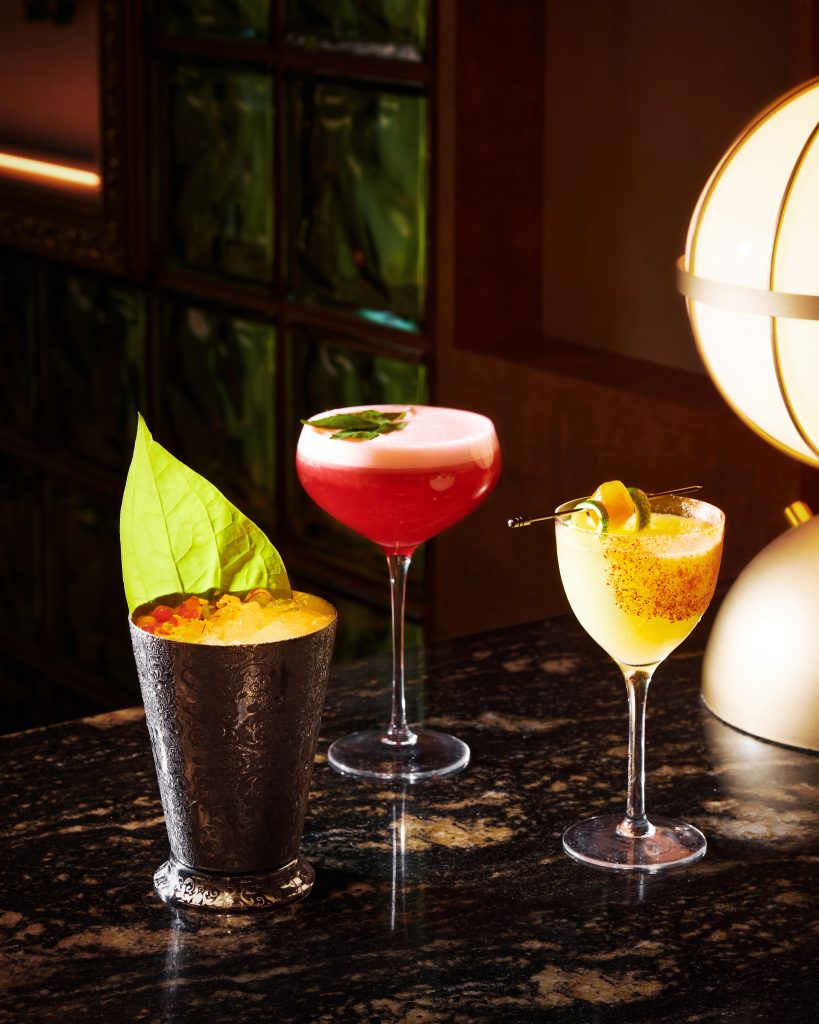 Rounder flavours present themselves with the Masala Milk Punch, a velvety and spiced creamy delight of Nusa Cana spiced rum, Bacardi carta oro, apple, coconut and masala whey.
Rounder flavours present themselves with the Masala Milk Punch, a velvety and spiced creamy delight of Nusa Cana spiced rum, Bacardi carta oro, apple, coconut and masala whey.
Also try The Prince of Cocoa, inspired by Chef Varun’s title as Mumbai’s Chocolate Prince. It showcases cacao nibs-infused Sailor Jerry rum, demerara sugar and a dash of bitter.
For something bolder, the Kaurava Night Cap hits all the spots with a bittersweet blend of Hendrick’s Flora Adora, Campari, 27W vermouth, strawberry and ghee.
About 27 Degrees West
27 Degrees West is named after India’s geographical position, which lies precisely 27 degrees west of Singapore. This newest restaurant offers a unique culinary experience by blending Indian cuisine from various Indian sub continents and tribes.
Traditional flavours, recipes and ingredients are reinterpreted through a modern lens, creating a sensory dining experience unlike any other.
Dishes speak of Chef Varun’s travels in and around India, served in chic small plates made for intimate sharing instead of the typical communal large platters.
Adjacent to the restaurant, discover a captivating cocktail bar where liquid alchemy blends seamlessly with the serene ambiance of its outdoor lounge, offering the perfect backdrop as you sip your cocktail.
At 27 Degree West, a sensory adventure that redefines the art of dining and drinking creates a mesmerizing experience that will leave one craving for more.
Address:
362 Orchard Road, Singapore 238887
Operating Hours: Sun to Thurs 11.30am- 11pm; Fri to Sat 11.30am-12am
Reservations: +65 9100 0949
Exclusive interview with Chef Varun Inamdar
“I was very young when I was first fascinated by the idea of making food at home. It was an age where I’m very impressionable through all the things I hear and
see. Around this time I got into the habit of sitting in front of the TV and diligently writing down recipes.
I usually spent my Sundays experimenting with recipes I found in books or on TV. My mother, grandmother, sister and father are wonderful cooks, so this is where my unofficial initiation happen ed.”
Chef Varun Inamdar is renowned as one of India’s top celebrity chefs, known for his innovative and unique approach to cuisine. With 22 years of dedicated contributions to Indian food, this versatile chef, chocolatier and food stylist has earned two National Awards for his exceptional work.
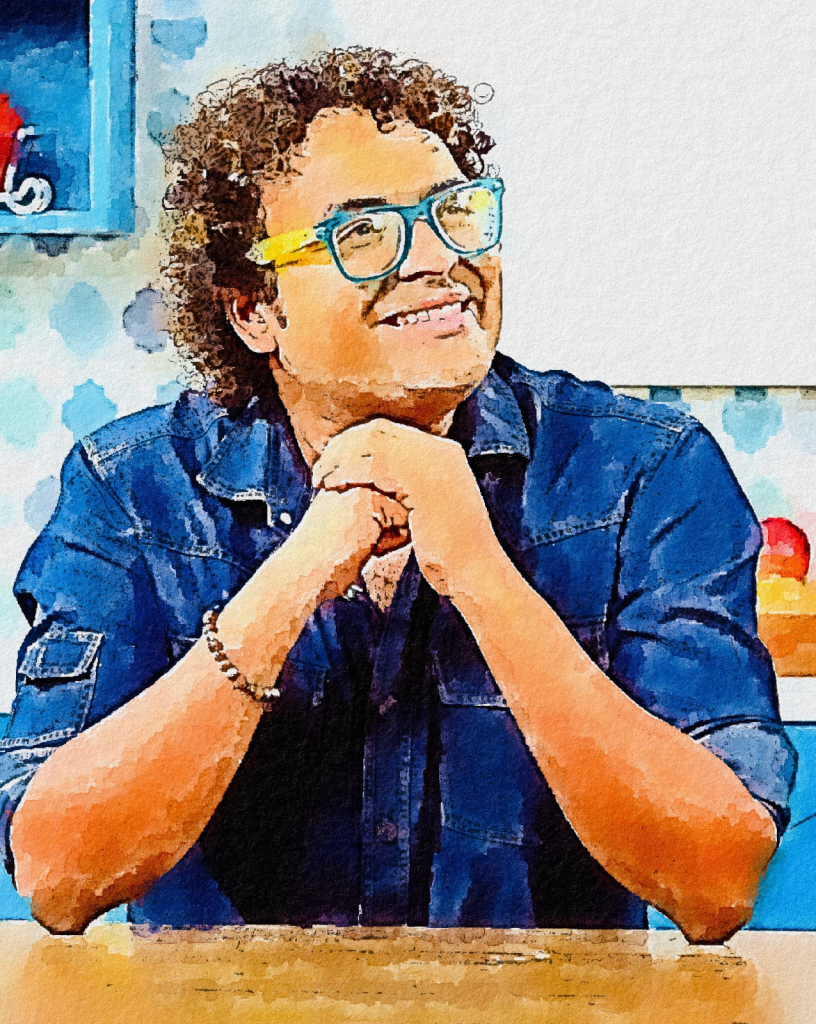 Varun hasauthored five cookbooks and is a Guinness World Record Holder for the Largest Mud Pie at 12 feet and 3,000 pounds.
Varun hasauthored five cookbooks and is a Guinness World Record Holder for the Largest Mud Pie at 12 feet and 3,000 pounds.
He is fondly known as ‘The Prince of Chocolates’ & ‘The Bombay Chef’ and is also the Brand A mbassador of Ecuadorian Cocoa in India.
In his illustrious career, Varun has cooked for Prime Minister Narendra Modi and served global leaders like Donald Trump, Barack Obama and Vladimir Putin.
His clientele also includes royalty such as Queen Rania of Jordan and the royal familiesof Al Sabah, Al Khalifa and Al Saud, as well as international stars like Julia Roberts, Will Smith and Amitabh Bachchan.
This is your first venture outside India. What new flavours are you bringing to Singapore?
The whole idea is to bring India that is undiscovered, because there are a lot of dishes that Indian cuisine is known for. But what I want to do is to bring even food from the Indian tribes. I want to bring food from regions that are still not discovered and glamorise them and take them to the next level.
There arre alread a few well-established fine dining restaurants in Singapore, and the scene is quite competitive. So what special will you be bringing to the table?
Like I said, I will be bringing the flavours which are undiscovered,. Unfortunately, Indian cuisine is being represented in a very generic way internationally, whether it’s in New York, London, Singapore or Dubai. What I want to do is to break the cuisine down into the micro cuisines.
For example, cuisines from the tribes of Madhya Pradesh, they have been never done before. Food from parts of Maharashtra, they’ve never been done. Ee’ve only taken the milestones. We’ve taken the butter chicken, and we’ve taken the dal makhani, and we’ve kind of glorified these dishes. But what I want to do is break it down, take it to the last mile, and then bring that out in the open.
So, on which regions are you focusing on?
I am bringing something even from Kashmir. But when I say Kashmir, I am not doing the quintessential Rogan Josh. I am getting into the lanes of Kashmir, and I am doing a Haleem mutton, and I’m getting those things out.
For example, even if you’re looking at Odia food, then I’m bringing the bath that they make there, they ferment it overnight and then bring it out. So, you know, these are the little things that are still not out there in the open.
How do you go out and collect all this information?
I have been travelling for several years now, and I’ve had this habit, it’s a mental thing. I keep writing, I keep making my own notes. I’ve also written a couple of cookbooks. I also help a lot of my friends, you know, with research and R&D. So this comes by default.
Even if I’m going to eat at the most popular restaurant, I would not order the signatures. I would order the least ordered dishes. So that also kind of gives you an idea of what is really happening in the restaurant. What is the thought process?
For example, there is a chutney that is made in Kashmir. It is called Doon Chetin and made with walnuts. Now, this is a chutney that you will not see being served in India. What I want to do is I want to serve my tikka with a chutney that is on this lines.
Otherwise, we’ve always eaten our chicken tikka with a green chutney, or a curd-based based chutney. But this way, you very subtly include these little things in the menu, which makes it interesting and outstanding.
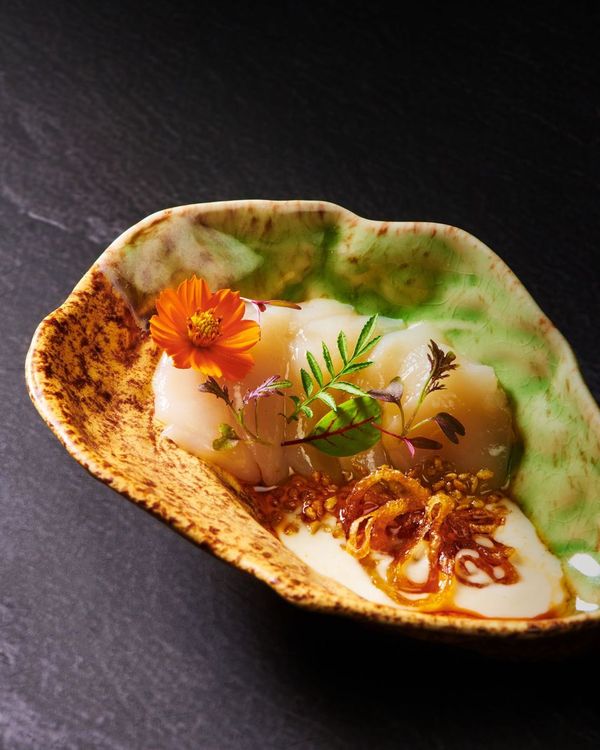 Is your menu in India focused on expats or the locals?
Is your menu in India focused on expats or the locals?
It’s very generic. I also am including a section called nostalgia, where there will be a lot of dishes that actually remind you and I of our home. So, if you’re craving for a nice, authentic, traditional Bisi Bele Baat, that is also on the menu. If you’re craving for a Patta Vada, which is so quintessentially Mumbai, then that is also on the menu. I’m also serving that with Kerala cassava chips. I’m creating a little salad out of coconut and curry leaves. So the pairing is also happening internally within the different states of India, not just inter-continental.
Indian cuisine is extremely complicated. You cannot generalise anything and say Indian cuisine. The moment you say Indian cuisine, the next question should be, oh, what part of India are you focusing on? So these little thing make it a very big challenge to bring such a large expanse of country into a tiny little menu of just 50 items. But, yeah, we’ll also keep changing and rotating the menu. That will keep it interesting.
Are you catering to the local palette or is it a cosmpolitan offering?
There are certain dishes that I can promise and say even the Indian diaspora may have never tried before. Eventually, food is a very generic medium by default. People are very subjective about the whole taste parameter. Somebody will love it. Somebody may say, Oh, I didn’t like it. I’ve never eaten this before, but it’s very good. Somebody may say, I’ve never eaten it before, and I’m very happy that I’ve never eaten. So, it’s a very, very swinging spectrum, you need to find that one little common thread.
It could be an emotional thread. It could be that it could be the thread of flavours, it could be the thread of novelty. It could be the thread of undiscovered India. So finding that thread is very important.
Some of your dishes which I have tasted are a little bit sweet. Some othere are sour or bitter. Is it typical of your style?
No, I don’t think it is a signature to that particular dish in a way. If you take butter chicken, over the years, a lot of chefs have made it creamier, have made it more buttery. But what is authentic is that tang of the tomato to come in, the butter to come in, the cream to come in. It’s a combination of a lot of flavours. It is also the smokiness that is very important.
Now, many people also look down upon butter chicken because they think Indian cuisine is only about butter chicken. But that is one dish that gets underlined every time Indian cuisine is written about. So we might as well get it right if it’s the tomatoes that come in or the smoked chicken that come or the smokiness that comes in. We’re keeping to all those premises.
You have been cooking since the age of 17…
I started professionally at the age of 17. But, informally, I started at the age of eight. I started in my home kitchen. There was a time when I used to bake a lot of cakes. So there was a time when my grandmother had a gas oven. SoI started with that.
It was very interesting because my grandmother used to layer sand or salt and then we used to keep a basket on it, and then we used to build up the whole bag. So that is how I literally started.
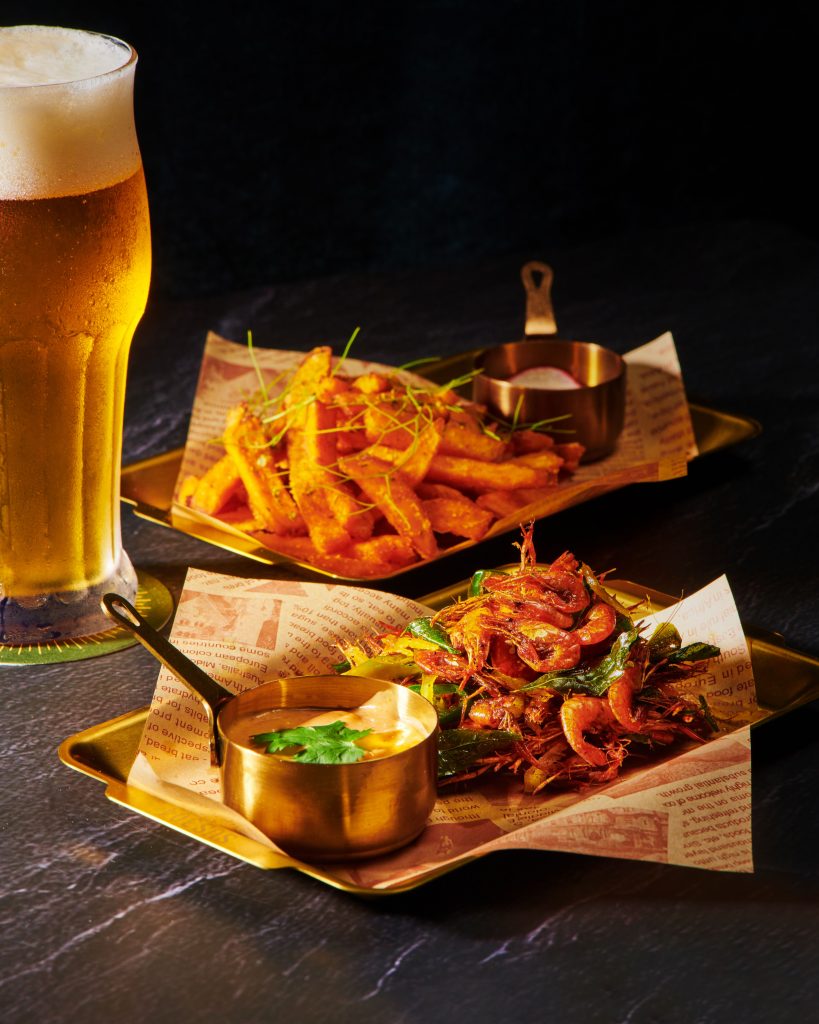
At 17, I started as a dishwasher. And slowly, I kept changing gears. I kept going up the ranks, and then eventually, when I finally resigned from the Oberoi group, I resigned as an Executive Sous Chef.
Then I moved to the royal family of Kuwait, worked with them for two and a half years. I worked there as the corporate chef and the business development head. IOpened some 21 business avenues for the family.
Then came back to India, and then I never wanted to go back to hotels. So then what next? So I started working in the media. So that’s how media happened, the social media.
It was prime time media, because I used to work on television. And then, of course, the dynamics of television are very different. It takes a lot of time. So then, because I wanted to do other things also, I wanted to learn food styling. I wanted to understand how publication happens. So I started writing cookbooks. I met a publisher. He told me, why don’t you write books? You speak so well, you connect so well, you’ve got lovely stories to say, why don’t you put all of this in a format. So then books started happening.
The first book that I wrote was pairing Indian food with wines. So we collaborated with a company called Pernod Ricard in Australia. The wines, and we paired it with Indian food. So then again, it was extremely complex, because Indian food is not associated with wine pairing. But then wine pairing happened, that book got an award.
The moment that book got an award, I got another publisher who gave me another book assignment. So like that. Then, you know, slowly, slowly, it grew to
having a physical restaurant.
You are born and raised in Mumbai…
I’m from Mumbai. But the dynamics are very different. I’m hardly in Mumbai though. So, having a restaurant there could be extremely complex, because I’m never in the city.
There was a time when I kept going a lot to Srinagar, so I opened a restaurant there. It’s actually a 75 year old restaurant and I became a part of it. It’s called New Light and it’s a couple of kilometers from Srinagar, in a village called Sopore.
Again, we do a lot of sustainable cooking there. The chefs, the entire team is local artistes. So we wanted to get that whole eco tourism in that one restaurant.
The food there is from across the world, which is very surprising. Because in a small town like Sopore, the only popular thing is a Wazwan, which is like a 21 course Kashmiri menu. But there we started doing Zaatar croissants with home made butter. We started doing Adana kebabs from Turkey. So these are the kind of things that we started training the locals to do. We do some amazing dim sums there, and we do them paper thin. Imagine doing this in a village in Sopore using local artistes. So this is how New Light happened.
My partner’s name is Yasir. He is third generation. His grandfather was a freedom fighter. He was also somebody who learnt a lot of bread making from the British. That was the time when yeast, which is one of the primary compositions of bread making, was not available in India. So he learnt the recipe by going into the jungles, getting some wood and some leaves, fermenting it, creating his own ferment, and he started baking bread 75 years back.
Today, we’ve kept that tradition alive. We still bake bread in the most traditional way, in a charcoal and wood-fired oven. Whave 263 things on the menu in Sopore, which is only a hamlet.
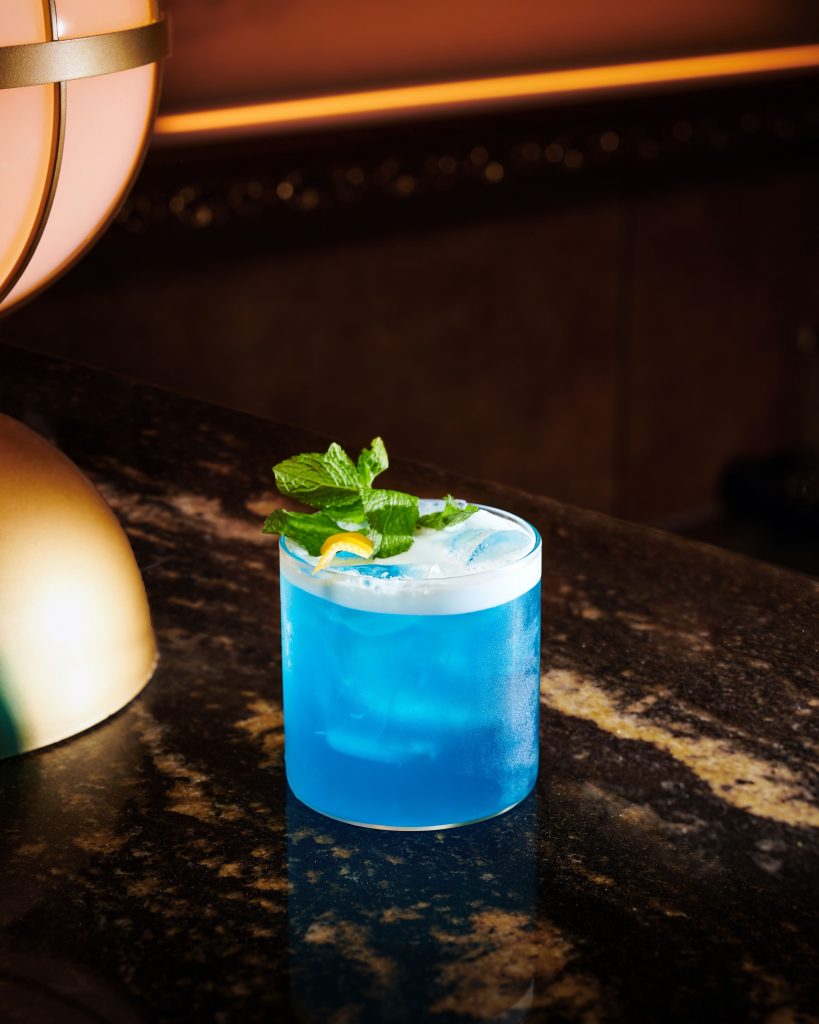 You have a restaurant in Srinagar. Why not in other Indian cities? And why you have come to Singapore?
You have a restaurant in Srinagar. Why not in other Indian cities? And why you have come to Singapore?
Srinagar happened because it just started as a friendly Alliance. So it just happened, Mumbai, again, is an extremely complex market, because it’s extremely overcrowded. There is so much and too much happening. Also, the ratio of restaurants and establishments opening and closing is extremely high, and it’s extremely volatile. When it comes to investments, t’s way too exorbitant.
Singapore happened because I love the city. I’ve come here several times. I’ve tried the food at a couple of places and I love the hawker streets. So I thought, why not Singapore? And I’ve done a lot of master classes. So for the Indian diaspora, for the foreigners, for the Caucasians, I’ve done a lot of master classes. So master classes also kind of give you that opportunity to gauge emotions, to understand how people are receiving your food, whether they find it popular, whether they don’t like it, if they like the flavours. Masterclasses are one of the best ways to judge. And I think then it happened.
You’re doing this in Singapore with three partners?
Yes.
How did you happen to prepare dishes for the Obamas?
It started with the Oberoi group. The Obamas visited India the first time when the Prime Minister was Manmohan Singh ji. He visited India for, of course, to improve bilateral relations. And it so happened that he stayed with the Oberoi group. And, as luck would have it, I got to serve the Obamas.
I hid behind a service bar, and it so happened that Mr Obama was walking in and he noticed me through the bottles, and he said, ‘You come out’. It was a breach of American security protocol. But he was so nice. He was so sweet. He just came. He placed his hand around my shoulder, and he said, ‘You’re the chef. Show me what you’ve cooked’. And he walked me into the room, and he asked me, ‘if you are Barak, what would you eat’?
Initially, I called him sir. He said, ‘No, you don’t call me, sir. You call me Barak’. I said, okay, so it was a little uncomfortable to begin with. But then I took a piece of chocolate. I said, you must try this. So he ate the chocolate. He loved it. He looked at Michelle and said, ‘Why don’t you come and learn this tomorrow?’ So I was just thanking my stars that she did not come to learn because otherwise it could have taken the entire security off the charts. But, anyway, all of this happened in 2007.
In 2010 when he came back to Mumbai, he looked around and said, ‘Does Varun Inamdar still work here?’ So, that kind of changed my graph completely. Because then he came and we met and we had a conversation, and you know, that was the beginning of my relations with him.
So the dessert that you just ate, the chocolate Miesse is something that I had created for Barak and his family, and they loved it so much that they said, ‘you know, this should be on every menu of yours’. So that’s how it happened.
You got a large part of your fame through social media…
Yes, helped me a lot. True, 100%.
Frankly speaking, I don’t work on that. It started as a very organic process. I started working in the medium of the Internet for a simple reason, because I wanted to do things that I wanted to do – television clips.
In a way, because for television, you need to follow the norms of the television heads. You need to follow the norms of channel producers. You need to follow the norms of the script that is given to you. You need to speak that language, that emotion, and you need to emote only in that frame.
“Internet happened because I wanted to bring my cuisine, my personality, my character, to my food, things that I wanted to do, things that I wanted to present to the world. Also, it’s so happy. Internet is a very funny medium, because the moment you do an egg free recipe, the comments start,. What if I use eggs? If you do something, say, I want to bake a cake without an oven, the internet will troll and say, How do I bake this? I have an oven. What’s the time? What’s the temperature? So it’s a very volatile medium, because you cannot really gauge the sensitivities. Also, your television screen has limitations.
Internet is borderless. So suddenly you have fans messaging you from Spain. You have fans coming in from Greece. You have fans messaging from Miami. You have fans coming in from the little islands. So then this is very addictive, because you suddenly know that, Oh, I’m getting the reach, I’m getting the milestones, I’m getting the numbers, I’m getting the voice, I’m getting the attention. So this is how it started.
Fortunately or unfortunately, I do not have a manager. I do not have a social media team. I post what I feel like posting. I do not follow the norms of the media, because the media tells you need to post at a certain time. I do not do anything of that sort. I just go all out with all my heart. I just go out and post. There are times when I just don’t post. There are seven, 7, 10 days, I just don’t post anything. But yeah, Ihe internet keeps you alive and kicking.
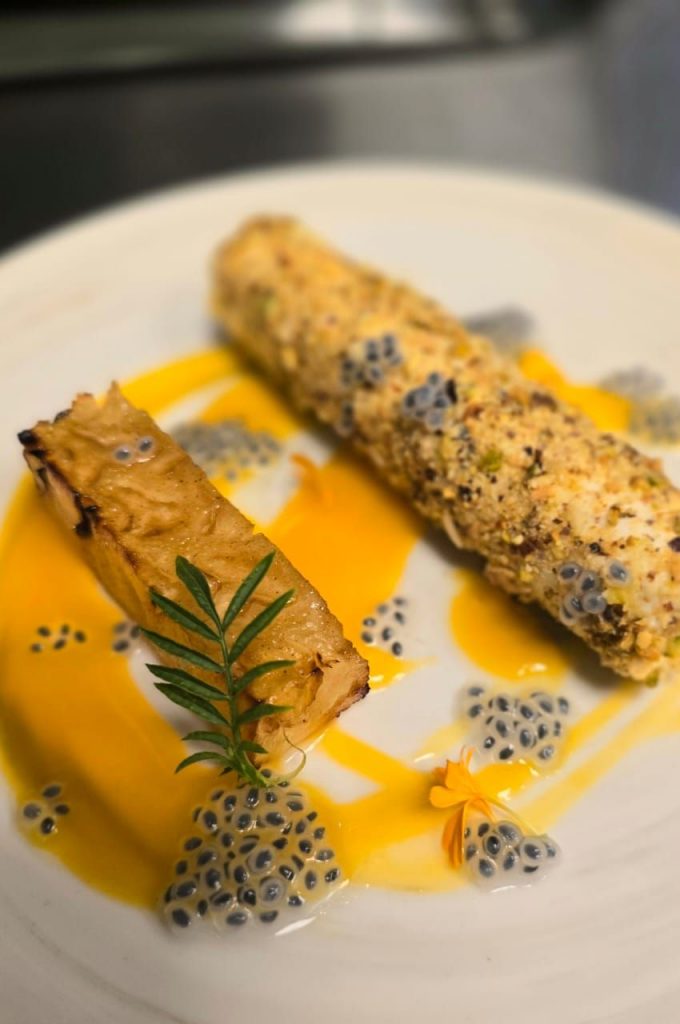 What’s your age and are you self-taught?
What’s your age and are you self-taught?
I’ll be 40 this year, 15 October. I have been right through in Mumbai all the time.
I wouldn’t say that I’m self-taught. I find it very schizophrenic to say self-taught. I have learnt from my grandmother, my mother, my father, my sister, my brother. This is an entire casual, friendly kind of a learning, but eventually you need to learn, you need to go to a culinary school. You need to pick up the range there. But culinary schools also have their limitations.
You need to work at the range as you need to hear, because in the kitchen, if you do not hear, you cannot replicate, you cannot emote. Also, when you start working in a restaurant, you suddenly realise that you are again bound by standard operating procedures. If you’re making a an X dish in a certain way today, at 8am or 11am it has to be the same, 3pm it has to be the same.
So, once you learn, you then unlearn. Because you unlearn everything else. You only learn the things that are there on the menu, at least for that time frame. Then you have to keep changing your gears, because then when you start heading operations, you need to bring your emotions to the menu eventually. But when you are a line cook, you just have to follow the red book. So it’s very different. Every stage, every designation, has a very different responsibility in the kitchen.
You have your own culinary school now…
I have my school. It’s in Gujarat. It’s the only cooking school in the world, which is 100% vegetarian. And I’m also the culinary Dean at the Asian Academy of Film Television, which is in Noida. These two institutes I keep shuttling between.
And what we do there is, again, very interesting. We do not follow written books. We create our own books every day, so we create a chapter every day, and that chapter becomes a chapter for them to follow.
It’s very interesting, because if you have a book which is printed, even the students actually lose interest because they think ‘why do I need to write it? I’m somebody who’s very old school in a lot of ways, especially when it comes to training. I like to follow a pattern, but I also like to create my own patterns.
“So when it comes to learning, especially, I would want somebody to sit down and make notes, because when you make notes, everybody makes notes differently.
You are bringing in flavours from all over India. But in the east, they use mustard oil. In the West, it’s basically sunflower. In the south, sesame oil. And in Kerala and Goa coconut oil. What’s your favourite oil?
I would love to cook my food with ghee. But, again, ghee does not go well with everyone.
In fact, in a lot of Indian food, unfortunately, we’ve been seasoned to use different kinds of oils, considering the micro cuisines that we have now. For example, if I give you a classic Bengali curry and I make it in ghee, you will not like it. You will never like it. Even a hardcore Bengali will not not like it. Somebody who does not understand the cuisine may also not love it, because certain things are also made for a certain reason.
It’s also the sustainable availability of that region. Now, very interestingly though, we use mustard all in the east. You also have a mustard belt called Punjab that does not use mustard, that uses ghee. So what is used in Punjab are just the leaves, which is called sarson ka saag. But do we use sarson ka sag in the east, where you also have production of mustard? What happens there is all the mustard leaves get canned, and they go across the world. So it’s a very interesting, dynamic mix. S
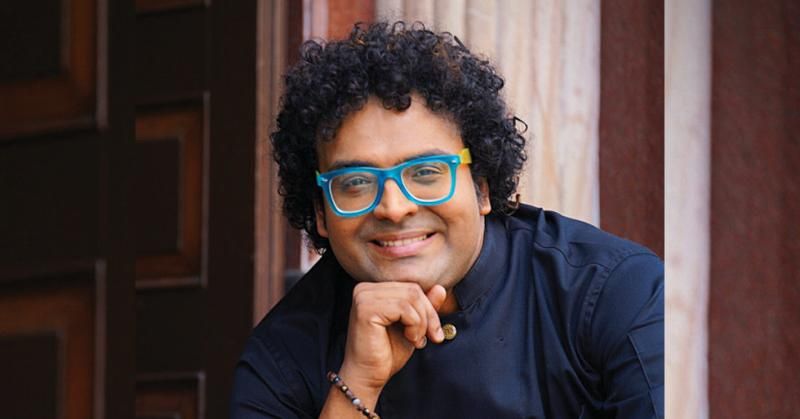
Have you tried Singapore food?
Not so much. But yes, in the last couple of visits, my partners keep taking me to a lot of hawker centres, which slowly are becoming my favourite places. In fact, just yesterday, we ate fried fish which was sweet and spicy and sour. So yeah, I’m getting used to local flavours
Any particular local dish that you like?
There is one thing that I’ve been raving about, and that is chilli crab. Now that is also one of the reasons why we’ve added Crab Thecha Thermador to our menu, because crabs, I believe, are a local favourite.
But what we wanted to do is reintroduce Singapore to crabs. Now, bringing theta was also very interesting, because thecha is not usually found on menus internationally. You may find it, not only in Indian homes, but also in very rural, tribal areas.







